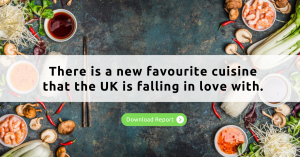Digital marketing involves a combination of strategies that work together to achieve a business’ goals of increasing brand awareness, leads, sales, and ultimately, revenue. This combination of strategies is effective due to its multi-faceted approach.
One important of aspect of digital marketing is PPC. Though long regarded as one of the most effective forms of digital marketing, recent PPC statistics reveal exactly how valuable they can be to a business and the revenue it creates.
But what exactly is PPC? And how does it help a marketing team achieve its objectives?
PPC stands for pay-per-click, a form of advertising in which advertisers bid for a spot in the results page of a search engine. When a user searches for a particular product or service using one or more related keywords, the specific ad is displayed at the prime spot, that is the top of the first page of a search result.
But the advertisers, only have to pay the search engine if the user clicks on their particular ad, directing them to their website. Hence, pay-per-click.
This creates a lot of paid traffic to your website rather than organic traffic, and when done right, can result in many leads and conversions. This makes PPCs have an incredible ROI.
Google AdWords is Google’s platform for pay-per-click advertising and it has completely altered the way in which leads are created and sustained. With Google dominating the search engine market with a market share of over 92%, it’s no surprise that Google AdWords has quickly become the one of the most popular advertising platforms in the world.
Does your business need PPC?
Yes. There is no doubt about it. Whether you have a new business and are looking to create brand awareness, or are an established company hoping to grow and retain sales, PPC is relevant to your digital advertising strategy.
Why? Because it has proven to be effective time and time again generating incredible results in the form of visibility, leads, and revenue.
PPC campaigns require skill and expertise to set up. The process includes research, selection of keywords, organisation to create relevant and targeted ads, and continuous optimisation to maintain its effectiveness.
However, a good PPC campaign can help a business reach its target market, increase leads, and create sales, while giving a substantial return on the original investment.
If you are still not convinced about the efficacy of PPCs and its crucial role in digital marketing, here are some interesting statistics on PPCs to ponder over.
PPC statistics:
PPC is one of the top three generators of on-page conversions after email marketing and on-page website conversions. (Formstack)
This indicates that PPCs have a greater chance of converting traffic and leads into sales when compared to other forms of marketing.
62% of advertisers look to increase their PPC budgets in the coming year. (Acquisio)
This shows that the majority of advertisers are still looking to optimise their PPC campaigns and maximise its potential. It also exhibits the fact that most advertisers view PPCs as a valuable and worthwhile investment.
Google earned $116.32 billion through Google Ads in 2018. (Statista)
Proving that PPCs are not only profitable to advertisers but also to its providers.
Google Ads accounts for almost 97% of Google’s total revenue. (Google Investor Relations)
Once again proving the incredible effect PPCs have on advertisers and PPC platform providers alike.
41% of clicks in Google searches go to the top three sponsored ads. (WordStream)
When taking into account that there are over 5 billion Google searches made each day, this translates to a massive amount of traffic generated via paid ads. However, recent statistics also indicate that to maximise the efficacy of PPCs, it is best used in conjunction with SEO in order to generate both organic and paid traffic to websites.
The first paid ad on the first page of a Google search has a click through rate of 7.11%. (AccuraCast)
While it may seem a small number, a CTR of 7.11% is actually impressive. And it’s more than double the CTR of paid ads in the second position.
53% of clicks on paid ads are made from mobile devices. (Power Traffick)
With over half of the total clicks originating from mobile devices, the importance of optimising sites for mobile usage becomes very apparent.
33% of users who click on paid ads do so because it directly answers their search query. (Clutch)
Another important factor that emphasises the need for optimisation of keyword searches for both PPCs and SEO-based marketing strategies.
52% of users who click on a paid ad, call or contact the business immediately after. (Lyfe Marketing)
Internet users who click on paid ads are often further down the sales funnel or their visits are more likely to result in a sale than organic visitors.
PPCs show an average ROI of 200%. (WordLead)
This means that for every dollar spent on paid ads, advertisers earned an average of two dollars in return.
Text ads are the most popular format for PPCs. (Clutch)
With almost half of the visitors preferring text ads, it is undeniably the most desirable format of paid ads. Another lucrative and effective PPC channel is its remarketing feature.
Over 7 million advertisers invested a total of more than $10 billion for PPCs in 2017. (Social Media Today)
A clear indication that companies and advertisers recognise the value of PPCs and the revenue it can generate.
45% of small businesses use PPC as part of their digital marketing strategy. (Clutch)
This statistic is particularly important as it demonstrates the role PPCs play in creating brand awareness and increasing visibility, both vital factors for small businesses. As most small businesses also have a limited marketing budget, PPCs are seen as smart investments in the overall marketing strategy.
Conclusion
The results are in. The statistics, consumer behaviour, and marketing experts agree, PPCs are vital in the overall digital marketing plan of a business.
With strong evidence supporting its value in generating leads, conversions, and ultimately revenue, it’s no surprise that advertisers are investing in and optimising PPC campaigns with the aim of reaching their target market, generating traffic to their websites, and creating the ultimate marketing strategy.
The latest PPC statistics also predict one more thing; the use and efficacy of PPCs is growing and is likely to keep growing as advertisers and consumers both realise its tremendous potential.
If you are looking to create a customised marketing strategy with the integration of *9
to boost your business, increase brand awareness, and maximise revenue, contact our incredible team at Serendipity Int. We specialise in creating innovative digital advertising campaigns that focus on growth and sustainability, helping you to achieve your business goals and obtain great returns on your investment.




